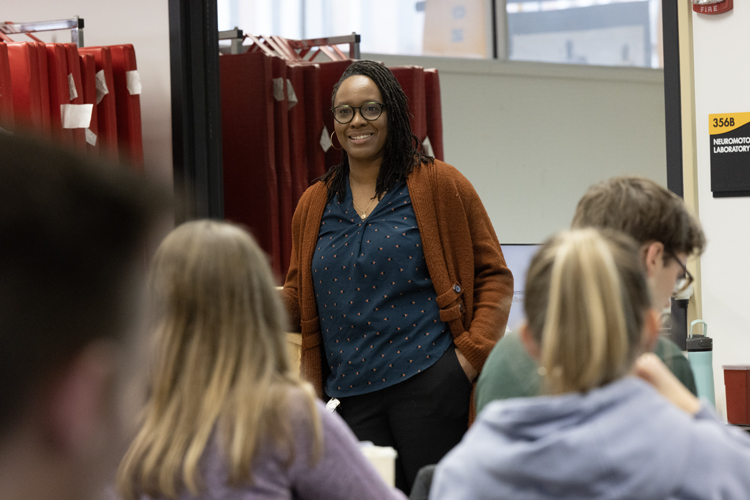As a physical therapist, Antoinette Spector saw first-hand the heavy burden that chronic pain has on the aging population.
“The majority of my cases were middle-aged and older adults who were dealing with pain every day,” said Spector, now an assistant professor of physical therapy at UWM. “So, I became really curious about the context of people’s lives and how that was influencing their pain experience.”
She wondered: Exactly which chronic life stressors affecting middle-aged and older adults could predict the likelihood of chronic and high-impact pain?
Chronic pain is distinct from occasional aches and pains because it affects a person on most days over a prolonged period. High-impact pain goes a step further, limiting a person’s ability to participate in daily activities.
The intersection of stress and pain
Spector also wanted to know whether the association between chronic life stressors and chronic pain is different for racial and ethnic segments of this age group. For both questions, existing research is limited.
In a recent study, Spector investigated using a dataset called the Health and Retirement Study (HRS), a survey of about 37,000 Americans over age 50 that began in the 1990s. The HRS is supported by the National Institute on Aging and the Social Security Administration.
Spector looked at questions regarding eight kinds of life stressors. She evaluated the cumulative effect and specific influence of each stressor on odds of chronic pain, as well as interactions with race and ethnicity as it relates to chronic pain burden.
The kinds of life stressors in the dataset included financial strain, ongoing housing problems, difficulties at work and personal health concerns or that of a family member.
Top pain-predicting problems
Results indicate that in 2018, the most common chronic life stressor among middle-aged and older adults was dealing with their own health problems (68%), followed by handling the physical or emotional issues affecting a spouse or child (46%).
Put another way, results show that the prolonged stress of dealing with a personal health problem or one of a family member is, itself, contributing to chronic or even debilitating pain.
Spector and her research collaborators, including UWM associate professor Inga Wang, found there were no significant interactions between the overall chronic life stress burden and racial and ethnic identity as a predictor of increased odds of experiencing chronic pain or high-impact chronic pain. Instead, they found that the cumulative impact of multiple chronic life stressors is what stood out as a predictor, regardless of race or ethnicity.
Experiencing four or more chronic life stressors increased the odds of experiencing chronic pain by two-fold and high-impact pain by nearly three-fold, the study showed.
People need help navigating the health care system
The findings show that there are shared concerns that affect all people at certain stages of life, Spector said. “It just adds to the story that people need better support navigating the health care system when they’re dealing with health issues and not just treating the chronic pain itself.”
For this population, she added, the inequity exists upstream from this study in the disproportionate exposure to chronic stressors among racial and ethnic minorities.
“So, establishing policies and practices that can reduce the burden of chronic life stressors affecting racial and ethnic minoritized groups is necessary to promote health equity.”
One surprising result from the study showed that ongoing housing problems had more of an effect on chronic pain for white respondents than it did among the Hispanic and Black respondents. Although that finding seems to run counter to some other studies, she surmises that a such broad term could mean different things to different people.
“For example, ‘housing issues’ could mean you’re having concerns about losing your housing or it could mean being physically unable to stay in a home you’ve owned for many years,” she said. “So, we’re curious about what is different across racial and ethnic groups within this stage of life, that might point us toward a better understanding of why we might have gotten this finding.”






